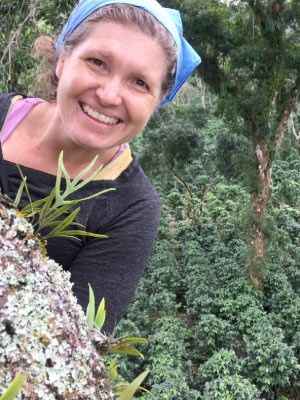Lightning storms, lightning bugs, Lightning McQueen — the sky’s electrostatic discharge has been the stuff of entertainment and legend for time immemorial.

And thanks to research by Nelson alumna Jeannine Richards, we now know that lightning is also a key driver of how tropical forests grow.
Jeannine Richards completed her PhD in the Nelson Institute’s environment and resources program, and she now works in the botany department as a post-doctoral researcher in the McCulloh Lab. In August, Richards coauthored a study that looked at how many — and what types of — trees in central Panama were struck by lightning, and how they fared. The team unearthed something curious: species that were most likely to be hit by lightning were also the most likely to survive the strike.
What does this mean? Lightning is an important factor in determining the health and make-up of forests. As Earth’s climate continues to change and storms grow more frequent and severe, understanding the effects of lightning on trees will help scientists model how forests across the globe might respond to climate change.
“Forests, globally, are getting younger. In general, we’re seeing the oldest trees in forests are dying for a variety of reasons and not being replaced,” Richards said. “Lightning is one of these hazards that’s contributing to loss of large trees over time, and we’re just now realizing that it needs to be part of that list of drivers.”
Read more about Richards’ work and the study’s findings.